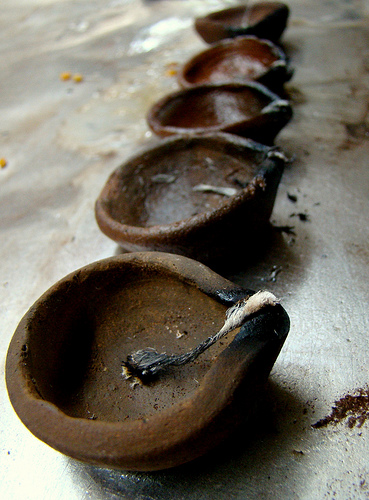FWP:
SETS == MIDPOINTS; WORDPLAY
EYES {3,1}
For background see S. R. Faruqi's choices. For more on Ghalib's unpublished verses, see the discussion in {4,8x}.
For discussion of the tulip and its 'wound' or 'scar', see {33,1}.
The grammar of the verse offers two possibilities. If we read the 'midpoint' phrase gar gul ho shahīd as part of an end-stopped first line, then the first line becomes 'if the rose would be a martyr, then the people of the garden are wounded/scarred by mutual connection'-- that is, the rose's martyrdom is a special case, it's what causes the other garden-dwellers to feel sympathetic pain. On this reading, the second line offers the tulip as a case in point, illustrating such a feeling of empathy.
But if we read the two lines with enjambment, then the verse offers first a general truth: 'the people of the garden are wounded/scarred by mutual connection'-- in other words, they all share each other's pain in a general way, not just the pain of the rose. We then see an example of such sympathy: 'if the rose would be a martyr, then the tulip suffers as well'.
In this verse, it doesn't seem to make much poetic difference, but still the two possibilities are grammatically and logically quite distinct. And we need to keep our analytical powers attuned, for other verses make more fundamental use of such multivalence.
At the heart of the verse is a network of wordplay. To be a martyr involves literally being a 'witness' to one's faith, and a 'witness', by definition, sees something and testifies to what he or she has seen. The rose is a martyr or 'witness', and the tulip is an overwhelmed, or stained, or suffering, 'eye'. Why is the tulip like an eye? Because it's round and cupped like an eyeball, and has in it the dark (blinded by grief?) 'pupil' of a wound or scar. Why is the tulip like an extinguished oil lamp? Because it's round in shape, and its dark central wound/scar resembles the burnt and blackened wick of the lamp.

Asi:
The people of the garden feel envy/jealousy toward one another, and the situation is such that if the blood-shrouded rose would be a martyr, then for this extinguished lamp the tulip would seem to be an amazement-overwhelmed eye.
== Asi, p. 229